Potřebujeme váš souhlas k využití jednotlivých dat, aby se vám mimo jiné mohly ukazovat informace týkající se vašich zájmů. Souhlas udělíte kliknutím na tlačítko „OK“.
ASTM C1199-14
Standard Test Method for Measuring the Steady-State Thermal Transmittance of Fenestration Systems Using Hot Box Methods
Automaticky přeložený název:
Standardní zkušební metoda pro měření v ustáleném stavu součinitel prostupu tepla prosvětlovací systémy, které využívají Hot Box metody
NORMA vydána dne 1.2.2014
Informace o normě:
Označení normy: ASTM C1199-14
Poznámka: NEPLATNÁ
Datum vydání normy: 1.2.2014
Kód zboží: NS-9990
Počet stran: 23
Přibližná hmotnost: 69 g (0.15 liber)
Země: Americká technická norma
Kategorie: Technické normy ASTM
Kategorie - podobné normy:
Anotace textu normy ASTM C1199-14 :
Keywords:
doors, fenestration, heat, hot box, R-value, steady-state, testing, thermal transmission, U-factor, U-value, windows, ICS Number Code 91.060.50 (Doors and windows),91.120.10 (Thermal insulation of buildings)
Doplňující informace
| Significance and Use | ||||||||||||||||||||||||||
|
4.1 This test method details the calibration and testing procedures and necessary additional temperature instrumentation required in applying Test Method C1363 to measure the thermal transmittance of fenestration systems mounted vertically in the thermal chamber. 4.2 The thermal transmittance of a test specimen is affected by its size and three-dimensional geometry. Care must be exercised when extrapolating to product sizes smaller or larger than the test specimen. Therefore, it is recommended that fenestration systems be tested at the recommended sizes specified in Practice E1423 or NFRC 100. 4.3 Since both temperature and surface heat transfer coefficient conditions affect results, use of recommended conditions will assist in reducing confusion caused by comparing results of tests performed under dissimilar conditions. Standardized test conditions for determining the thermal transmittance of fenestration systems are specified in Practice E1423 and Section 4.4 Similarly, it would be desirable to have a surround panel that closely duplicates the actual wall where the fenestration system would be installed. Since there are such a wide variety of fenestration system openings in North American residential, commercial and industrial buildings, it is not feasible to select a typical surround panel construction for installing the fenestration system test specimen. Furthermore, for high resistance fenestration systems installed in fenestration opening designs and constructions that have thermal bridges, the large relative amount of heat transfer through the thermal bridge will cause the relatively small amount of heat transfer through the fenestration system to have a larger than desirable error. For this reason, the Calibration Transfer Standard and test specimen are installed in a homogeneous surround panel constructed from materials having a relatively high thermal resistance. Installing the test specimen in a relatively high thermal resistance surround panel places the focus of the test on the fenestration system thermal performance alone. Therefore, it is important to recognize that the thermal transmittance results obtained from this test method are for ideal laboratory conditions, and should only be used for fenestration product comparisons unless the thermal bridge effects that have the potential to occur due to the specific design and construction of the fenestration system opening are included in the analysis. 4.5 This test method does not include procedures to determine the heat flow due to either air movement through the specimen or solar radiation effects. As a consequence, the thermal transmittance results obtained do not reflect performances that are expected from field installations. It is possible to use the results from this test method as input to annual energy performance analyses which include solar, and air leakage effects to get a better estimate of how the test specimen would perform when installed in an actual building. To determine the Solar Heat Gain Coefficient of fenestration products, refer to NFRC 200. To determine air leakage for windows and doors, refer to Test Methods E283 and E783. 4.6 It is important to recognize that the thermal transmittance, US, value determined in Section 4.6.1 It is important to recognize that due to radiation effects, the room side or weather side temperature (th and tc, respectively), has the potential to differ from the respective room side or weather side baffle temperatures (tb1 and tb2, respectively). If there is a difference of more than ±1 °C (±2 °F), either on the room side or weather side, the radiation effects shall be accounted for as described in Sections 6 and 9 to maintain accuracy in the calculated surface heat transfer coefficients. Calculating the radiation exchange for highly conductive test specimens or projecting fenestration products as described in Annex A2 is not a trivial task. 4.6.2 The calculation of the standardized thermal transmittance assumes that only the surface heat transfer coefficients change from the calibrated standardized values for the conditions of the test. This assumption is possibly not valid if the surface temperature differentials for the standardized calibration conditions are different from the surface temperature differential that exists on the test specimen during the test. Currently, specifications for the Calibration Transfer Standard give it a thermal transmittance of 1.7 W/(m2·K) [0.3 Btu/(hr·ft2·°F)]. Accordingly, the calculation of the standardized thermal transmittance produces the least error when performed on test specimens with a similar thermal transmittance. 4.6.3 It is important to note that the standardized surface heat transfer coefficients, hh and hc, as calibrated prior to testing a fenestration product using an appropriately sized Calibration Transfer Standard (CTS) have the potential to differ from the surface heat transfer coefficients that exist during a hot box test on a specific test specimen. Fenestration systems usually have frame and sash surfaces that introduce two- and three-dimensional convective heat transfer effects which result in variable surface heat transfer coefficients, which differ from the uniform standardized values. As a result of this, the test specimen surface heat transfer coefficients will differ from those obtained with the non-framed, essentially flat Calibration Transfer Standard tested under the same conditions. In this standardizing procedure, it is assumed that the differences are small enough so that the calibration surface heat transfer coefficients can be used to calculate equivalent test specimen average surfaces temperatures, 4.6.4 In these situations, it is important to attempt to measure the test specimen surface temperature distributions and then calculate directly the test specimen average area weighted surfaces temperatures, t1 and t2. This area weighting (AW) method also has problems in that the placement of temperature sensors to get an accurate area weighting is not known, especially on high conductivity horizontal surfaces that act as heat transfer extended surfaces (that is, fins). In addition, the placement of many temperature sensors on the test specimen surfaces will affect the velocity fields in the vicinity of these surfaces which will affect the surface temperatures and surface heat transfer coefficients. |
||||||||||||||||||||||||||
| 1. Scope | ||||||||||||||||||||||||||
|
1.1 This test method covers requirements and guidelines and specifies calibration procedures required for the measurement of the steady-state thermal transmittance of fenestration systems installed vertically in the test chamber. This test method specifies the necessary measurements to be made using measurement systems conforming to Test Method C1363 for determination of fenestration system thermal transmittance. 1.2 This test method refers to the
thermal transmittance, U of a fenestration
system installed vertically in the absence of solar radiation and
air leakage effects.
1.3 This test method describes how
to determine the thermal transmittance, US of a
fenestration product (also called test specimen) at well-defined
environmental conditions. The thermal transmittance is also a
reported test result from Test Method C1363. If only the thermal
transmittance is reported using this test method, the test report
must also include a detailed description of the environmental
conditions in the thermal chamber during the test as outlined in
1.4 For rating purposes, this test
method also describes how to calculate a standardized thermal
transmittance, UST,
which can be used to compare test results from laboratories with
vastly different thermal chamber configurations, and facilitates
the comparison to results from computer programs that use standard
heat transfer coefficients to determine the thermal transmittance
of fenestration products. Although this test method specifies two
methods of calculating the standardized thermal transmittance, only
the standardized thermal transmittance result from one method is
reported for each test. One standardized thermal transmittance
calculation procedure is the Calibration Transfer Standard (CTS)
Method and another is the Area Weighting (AW) Method (see Section
1.5 A discussion of the terminology
and underlying assumptions for measuring the thermal transmittance
are included.
1.6 The values stated in SI units are to be regarded as the standard. The values given in parentheses are provided for information purposes only. 1.7 This standard does not purport to address all of the safety concerns, if any, associated with its use. It is the responsibility of the user of this standard to establish appropriate safety and health practices and determine the applicability of regulatory limitations prior to use. |
||||||||||||||||||||||||||
| 2. Referenced Documents | ||||||||||||||||||||||||||
|
Podobné normy:
Historická
1.10.2013
Historická
1.6.2014
Historická
1.9.2008
Historická
1.2.2007
Historická
1.11.2013
Historická
1.11.2011
Doporučujeme:
Aktualizace technických norem
Chcete mít jistotu, že používáte pouze platné technické normy?
Nabízíme Vám řešení, které Vám zajistí měsíční přehled o aktuálnosti norem, které používáte.
Chcete vědět více informací? Podívejte se na tuto stránku.


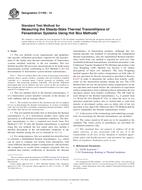
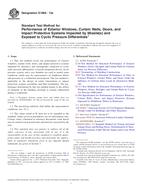 ASTM E1886-13a
ASTM E1886-13a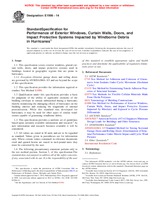 ASTM E1996-14
ASTM E1996-14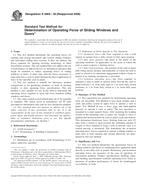 ASTM E2068-00(2008)..
ASTM E2068-00(2008)..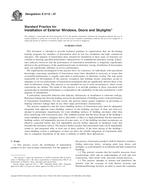 ASTM E2112-07
ASTM E2112-07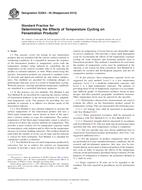 ASTM E2264-05(2013)..
ASTM E2264-05(2013)..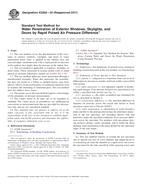 ASTM E2268-04(2011)..
ASTM E2268-04(2011)..
 Cookies
Cookies
